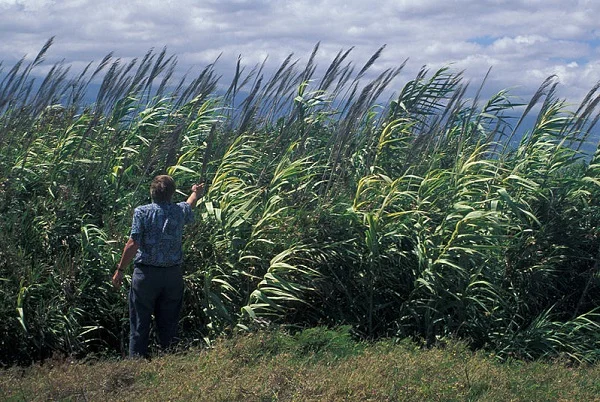Instead of making biofuel from newly planted crops like Arundo donax – one of the main feedstocks at a big new cellulosic ethanol facility in Italy, and a plant that some environmentalists fear – why not harvest the invasive species that are already causing problems?
Laura Quinn, a plant ecologist at the University of Illinois’ Energy Biosciences Institute, had heard the suggestion. So she looked into it. Alas, “It just didn’t add up.”

Arundo donax, also known as giant cane. (image via Wikimedia Commons)
When you think about it, it’s not surprising. Making environmentally beneficial and economically viable biofuel with already well-understood plant material is a challenging proposition; even with substantial government support the industry has been very slow to get off the ground in the United States. Introducing unpredictable invasive species into the equation just makes the proposition even more difficult.
Most existing or planned biorefineries can process only a single, or at best, a small handful of conventional feedstocks, and are not likely to be flexible enough to handle the variety of material brought in from invasive plant control projects. The breakdown and processing of plant tissues to ethanol requires different temperatures, enzymes, and equipment that are all highly specific. The proportion of cellulose, lignin, and other fractionation products can differ even within a single genotype if it is grown in multiple regions so the variations between completely different plant types would be an even greater hurdle.
Quinn said there might still be a way to create energy (in addition to realizing a habitat restoration benefit) from harvesting the plants we don’t want, however.
“There may be possibilities to use invasive plants as alternative sources of energy, like combustion for electricity,” she said. “Invasive biomass could drop into the existing supply of biomass being co-fired with coal in the already huge network of electrical power plants across the country. That would eliminate the technological barriers that conversion to ethanol presents.”






